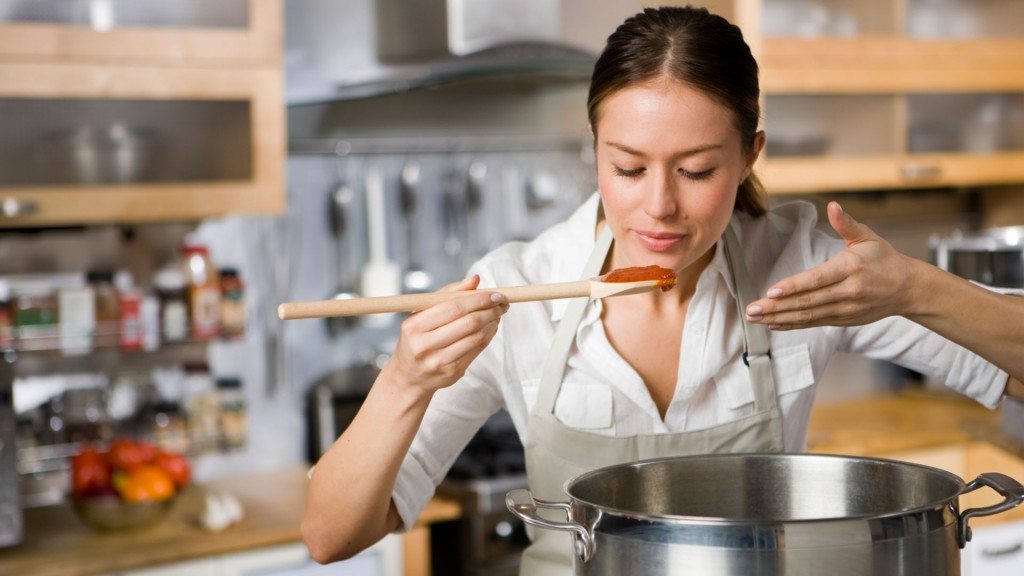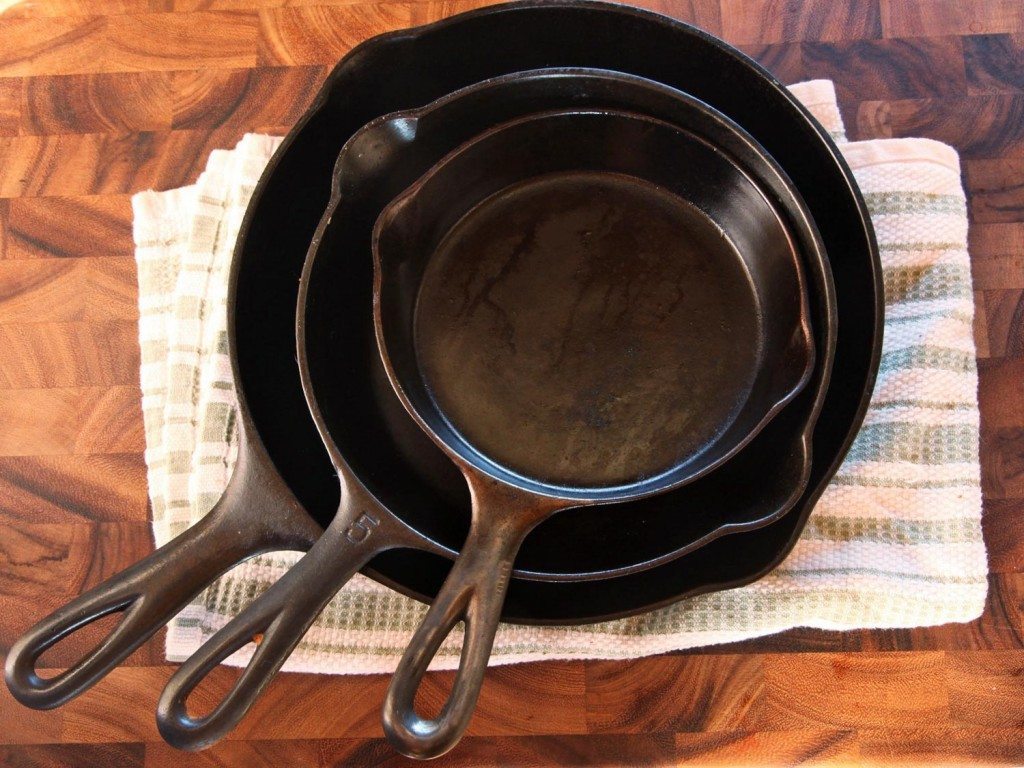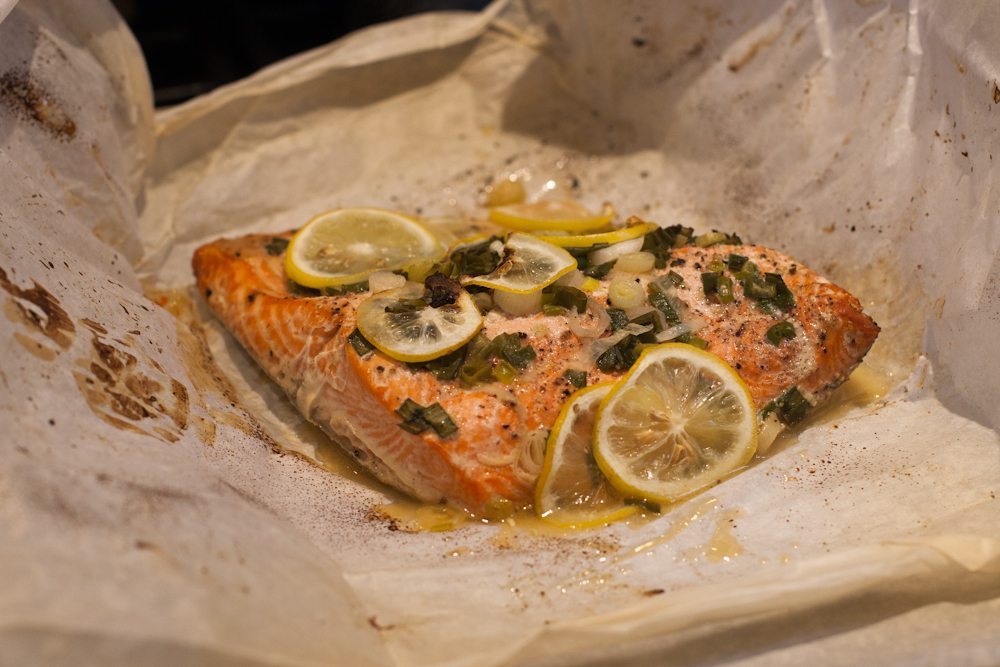
Regardless of your cooking status, we have to eat the food we make, so why not treat ourselves to better tasting food? Here are 1o essential cooking tips from chefs that everyone should learn. We can all follow a recipe to the promise land but learning how to be better in the kitchen is what sets the “chef” apart from the “Cook.”
10: Taste. Taste. Taste.
We often forget to taste our food before we serve it. This is a big fat no-no and is the easiest way to improv your cooking. A good cook should be constantly tasting and evaluating the flavors and textures of their food. Adding an extra dash of salt or a pinch of spice before you serve your dish can make a major difference in what you eat.
“When making meatballs or meatloaf, you need to know how the mixture tastes before you cook it. Make a little patty and fry it in a pan like a mini hamburger. Then you can taste it and adjust the seasoning.”
~ Isaac Becker of 112 Eatery, Minneapolis
9: Make Sure Your Pan & Oven Are Hot
This step is often overlooked when cooking because the results are often minor, however this is a vital step in cooking food and abiding by temperatures is essential to achieving better results. Throwing a chick breast in a pan that hasn’t fully heated up will still cook your chicken, but it also means that the extra time it takes to warm up the pan and your chicken will result in a dryer chicken breast than had you been patient. Even that late night frozen pizza you pop in the oven will lack the crispness if you don’t give the oven those vital few minutes to heat up.
The next time you fry an egg, throw one in the pan before it’s warmed up. Now fry an egg in the same pan that’s hot. You will see a big difference in not only the way the egg looks but in its texture. The egg that was thrown into a cold pan will be thin and rubbery. The egg thrown into the hot pan will be thick and tender.
8: Don’t Ever Rinse Your Pasta
Growing up I watched my grandmother and mother run water over their pasta after draining it, and by habit, I too started rinsing my pasta. I later discovered that this was an unnecessary step. By rinsing your pasta you wash off the stick starches on the pasta, which prevents the pasta from absorbing and sticking to the sauce. If you ever looked down at your plate of spaghetti and found a pool of water around it, then you know what I’m talking about.

7: Invest In A Cast Iron Pan
Cast Iron pans are inexpensive ($20) and are virtually indestructible. The are great for cooking meats, getting “grill marks” or color on your vegetable, you can throw the whole thing in the oven, and they will replace your non-stick pan. The only real enemy a cast iron pan has is soap. As long as you take a moment to oil your pan and wipe it down when finished, you will find that cast iron pans can out perform the most expensive of pans.
Non-stick pans are great for certain cooking applications but more often than not we average cooks will use the non-stick pan for almost every occasion. This leads to non-stick pans wearing out within a year and it losing it’s non-stick quality. Cast iron on the other hand has the same level of non-stick (when heated up or oiled) as your fancy higher end non-stick pans, and it will never wear out.
6: Zest!
By shaving off the colorful rind of a lemon, lime or orange can make an unbelievable difference in your food and make you look like a gourmet chef. Adding a little lemon zest to a salad, over pasta, or fish fresh from the oven is amazing and so simple. Zesting can be done without a fancy zester too. You can finely chop it with a knife or use a small cheese grater if you have one.
5: Parchment Paper
You know that roll next to the plastic wrap at the grocery store you always gaze at but never buy? That stuff is cooking gold! If you line your baking sheet with it you can save yourself a lot of cleaning and scrubbing. If you line your cupcakes of muffins with it you will look like you bought them at a bakery. If you wrap fish and a few vegetables inside a little parchment paper pouch, you can make a moist dinner for one. It’s amazing stuff.

4: Let Meats Reach Room Temperature Before Cooking
The longer it takes most meats to cook, the more moister that escapes and evaporates. If you pull meat from the fridge or the freezer and then throw it on the grill it’s going to take a lot of extra time to get that 30 degree center up to whatever temperature it needs to reach to cook. By letting your meat or fish reach room temperature (70 degrees) you will let your meat cook more evenly and in a shorter period of time. This equals better food. Being patient and taking the extra time to let your pans, ovens, and meats reach the temperatures they need to cook will make a notable difference in the tenderness of your dishes.
“To cook a steak, I always start by cooking it on its side, where there is a rim of fat on its narrow edge. I render it down so there’s good, flavorful fat in the pan for the rest of the cooking.”
~ Alain Ducasse of Benoit, New York City
3: Learn to Make a Roux
Every cook should know how to make a Roux. It’s simple and greatly improves dishes. A Roux is the combination of fat and starch to make a simple thickening agent used to thicken soups, and sauces. Learning how to make a roux is easy and the results will elevate your cooking to the next level.
2: Never Cook A New Dish For Company
The number one rule for cooking is to never serve a new dish to guests. Always serve something you feel comfortable with and have experience cooking. Experiment and try out new recipes on a Tuesday and save the tried and true for Saturday night. It’s a sure fire way to impress guests and show off your cooking skills.
1: Make Chef Thomas Keller’s Roasted Chicken
I’ve made this dish many times and it yields stunning results. It’s so simple and yet so incredibly juicy and flavorful. Chef Keller explains how to make this dish with only a few ingredients and with minimal steps.